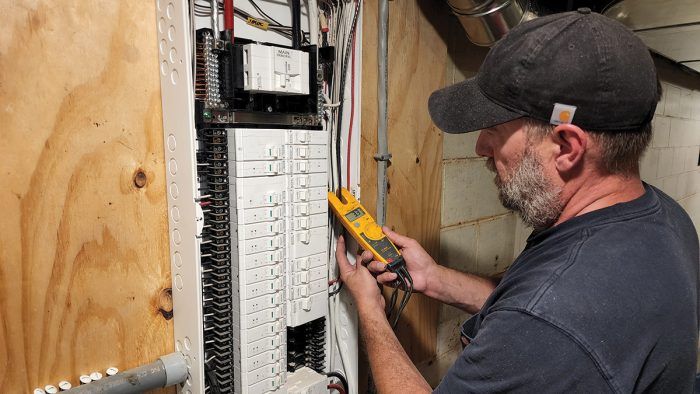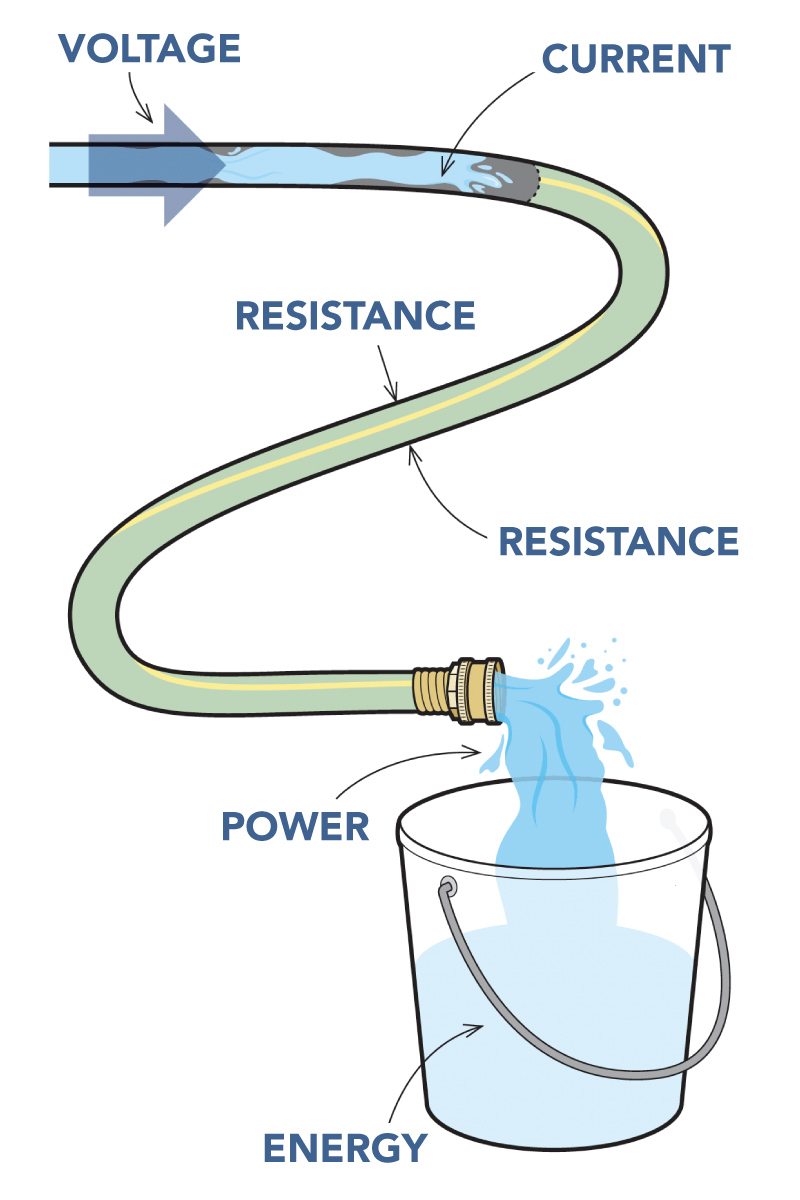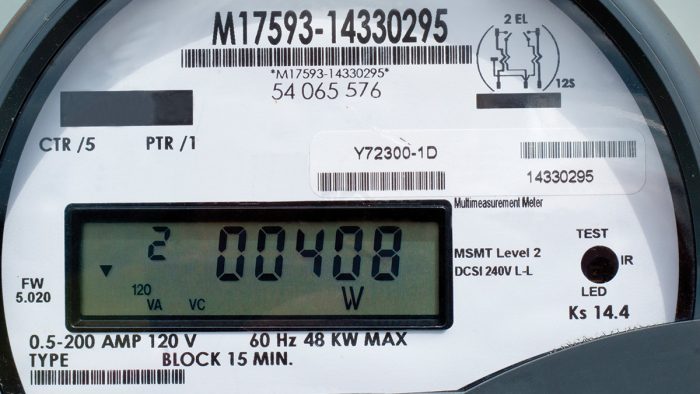Understanding Electricity Terms and Billing
Learn the difference between terms like voltage and power and how your energy bill is determined at the end of the month.

Electricity is a complex concept, but understanding the basic vocabulary and the relationship between each component within an electrical circuit is the first step to determining a home’s electrical usage. Using a water hose as an analogy can help with understanding the basics.
Voltage
Voltage is the pressure that pushes charged electrons through an electrical circuit, much like the pressure that pushes water through a hose. Voltage is measured in volts. Almost all voltage in residential construction in the United States will be 120v or 240v.
Current

Current is the strength or intensity at which electricity moves, much like the flow of water in the hose. Current is measured in amperes, or amps. Overcurrent devices, such as breakers or fuses, and wire sizing are all based on the amperage of a circuit. Most common in residential construction are 100-amp to 200 amp main electrical service panels with 15-amp or 20-amp branch circuits supplying lighting and outlet receptacle loads.
Resistance
Resistance is the ease of movement or the difficulty with which an electrical current passes through a conductor. In the water analogy, the diameter of the hose is a form of resistance in that the bigger the hose, the more water that will flow through. A crimp in the hose would be a more extreme type of resistance. Resistance is measured in ohms.
Power
Power is a measure of the rate at which energy flows, like the volume of water flowing from the hose, given a specific pressure and hose diameter. Power is measured in watts.
Energy
Energy is like measuring the volume of water that has flowed through the hose over a period of time. Energy is measured in watt-hours, or more commonly kilowatt-hours (kwh). One kilowatt equals a thousand watts.
How electricity is billed
Electrical meters are constantly recording electricity usage. The provider will subtract the previous month’s meter reading from the current month’s reading to calculate usage, which will be represented in kilowatt-hours, or kwh. The usage for the month is then multiplied by the current price per kwh.
Some providers have a tiered-rate structure—my provider charges one rate for the first 500 kwh used. The rate increases when that amount of usage is reached for the month. This acts as an incentive for customers to use less electricity. Another way power providers set up rates is seasonally. A rural electricity provider in my area has a rate structure where spring and fall rates (times of the year when heating and cooling demand is at its lowest) are the lowest of the year. Electricity demand is highest during the summer months, which also results in the highest per-kwh price. Wintertime demands can also be high, but the rates during this period fall somewhere between the summer and spring/fall.

Other providers might use a demand pricing system. The price-per-kwh is based on the most electricity used during any given time within the month. In other words, if every electrical device in your home happened to turn on at the same time at some point during the month, the rate you’d be charged would be higher than if the equipment cycled without all being on at the same time. This is called demand metering.
Some electricity providers will give customers a special rate if the provider is allowed to control a piece of equipment. Dual Fuel is one such program near me. A second meter is installed at the home with the heating equipment’s usage as the only usage registered through that meter. The electricity provider has the ability to turn off the meter during periods of high electricity demand (often this program will require a second source of heat that can automatically turn on during the controlled period). In exchange, the customer is given a special electricity rate, which can be as low as half the normal rate. In the case of controlled electric heating loads, this results in a very competitive cost compared to other fuel sources. In addition to heat loads, electric water heating, air-conditioning equipment, and even electric-vehicle charging can also be on this type of controlled program.
Travis Brungardt is co-owner of Catalyst Construction in Prairie Village, Kan. Randy Williams conducts energy audits and assessments and is the voice behind northernbuilt.pro.
This article originally appeared in Options for Smarter Home-Energy Tracking from Issue #311.
RELATED STORIES





